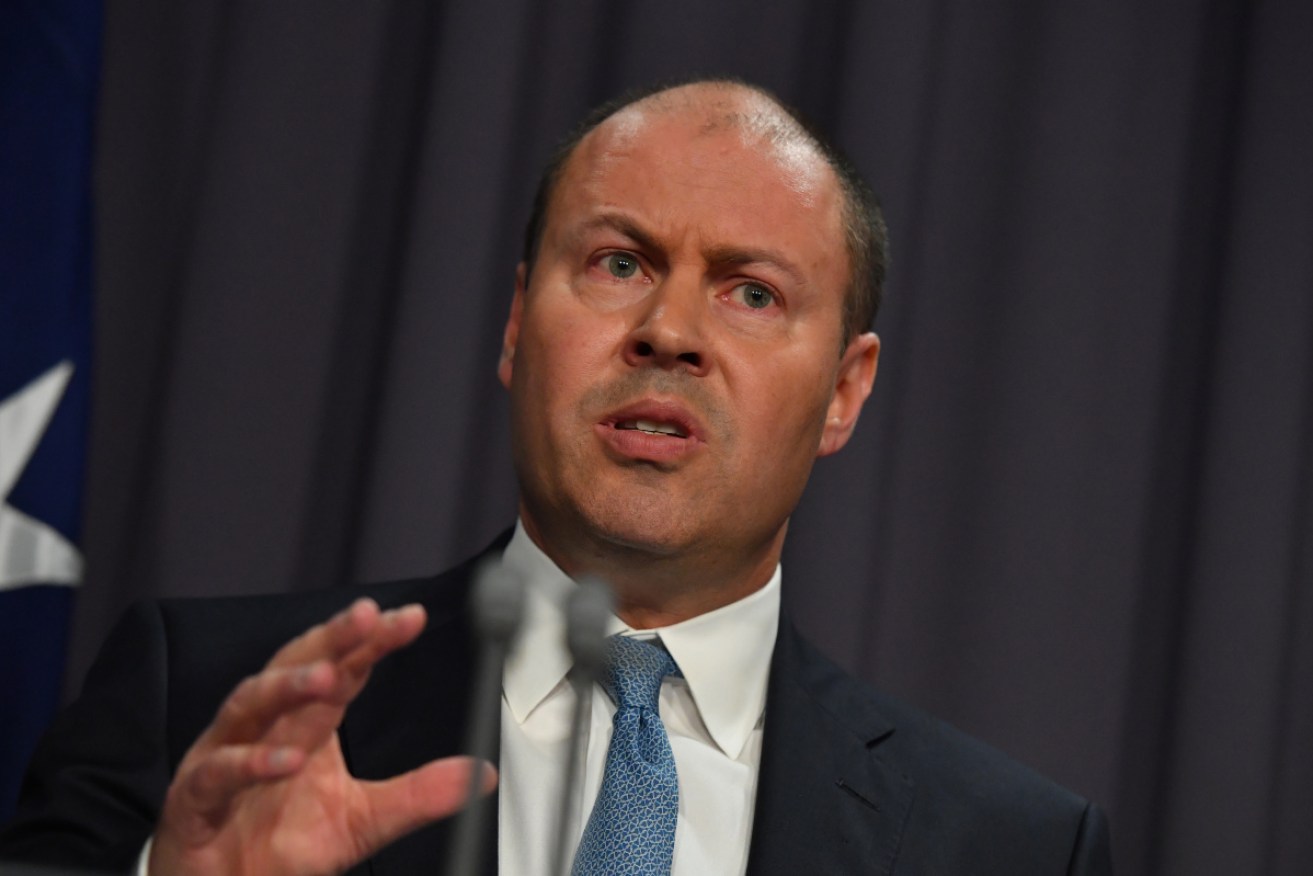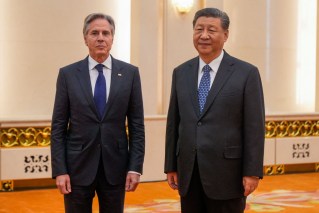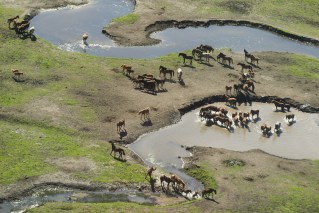‘Wasted recovery’: COVID jobs crisis to extend until 2024


Josh Frydenberg said the case against Mr Porter is closed. Photo: AAP
Labor is accusing the government of a “wasted recovery” from the COVID pandemic, blasting Scott Morrison for failing to invest more in employment growth and renewable energy, despite a budget update shwoing better-than-expected jobs and deficit numbers.
The government’s cautiously optimistic MYEFO (Mid-Year Economic and Fiscal Outlook) finds Australia is “rebounding strongly” from COVID, but it will be many years before national debt, unemployment and economic figures return to pre-pandemic levels.
“The economy is a bit stronger now than the Morrison Government and most forecasters imagined in the depths of this crisis, but is still much weaker than it needs to be,” said Labor’s shadow treasurer Jim Chalmers and shadow finance minister Katy Gallagher.
Economy has ‘come a long way’
It’s been just two months since the federal budget, but treasurer Josh Frydenberg and finance minister Simon Birmingham claimed the nation’s economic picture had already become rosier in that short time.
Australia’s real GDP is forecast to grow by 4.5 per cent in 2021, they said.

Mr Frydenberg and Mr Birmingham launched the MYEFO on Thursday. Photo: AAP
The federal budget deficit in 2020-21 is projected to be $197.7 billion, revised down some $16 billion since the October budget.
The peak unemployment will be a little lower than predicted, the treasurer said – around 7.5 per cent in March – indeed, he unveiled the MYEFO just after Bureau of Statistics figures reported national unemployment improved 0.2 per cent to 6.8 per cent last month.
With businesses no longer needing JobKeeper wage subsidies, the cutting back of JobSeeker payments and more people in work, Mr Frydenberg said the government expected to spend $6.5 billion less and rake in $9.4 billion more in taxes in 2021, than was projected just two months ago.
“Australia is outperforming all advanced economies,” Mr Frydenberg boasted on Thursday.
“We have come a long way from Treasury’s initial estimate that the unemployment rate could reach 10 or 15 percent without JobKeeper.”
The MYEFO documents paint a picture of a national economy back on track.
“The Australian economy is rebounding strongly,” according to the report.
“The labour market continues to strengthen alongside the recovery in economic activity, with around 80 per cent of the 1.3 million people who lost their job or were stood down on zero hours in April now back at work.”
Four-year unemployment ‘crisis’
However, Mr Frydenberg said it would be “mid-2024” before unemployment tickles 5.25 per cent, near where it was at the start of this year.
He admitted unemployment would take years to return to its pre-pandemic level, predicted to decline to 6.25 in mid-2022 and 5.75 in mid-2023.
MYEFO warns wage growth is “expected to be subdued across the forecast period”, stuck at 1.25 to 1.5 per cent for the next few years – lagging far behind GDP growth. The report noted that wage growth for the year to September, just 1.4 per cent, was “a record low”.

Jim Chalmers and Katy Gallagher said the recovery was being “wasted”. Photo: AAP
Mr Chalmers and Ms Gallagher slammed the government for not announcing new employment support programs in the MYEFO.
“Any recovery in the Budget and the economy is welcome but today’s mid-year update contains no new measures to tackle the jobs crisis, build for the future or help struggling families and small businesses,” they said in a statement.
“The economy still hasn’t rebounded strongly enough or quickly enough for the 2.2 million Australians who are looking for work or more work right now.”
The Labor pair accused Mr Frydenberg of “an insult to the millions of Australians who have made enormous sacrifices this year”, in not doing more to smooth the way over the next few bumpy months.
“The update confirms cuts to JobSeeker and does nothing to tackle insecure work, generate cheaper and cleaner energy, create opportunities for women, or improve access to child care,” Mr Chalmers and Ms Gallagher said.
Key assumptions not certain
In addition, the potential failure of rosy predictions – assuming a simple vaccine rollout, no further escalations to the trade war with China and no more state border lockdowns due to COVID outbreak – could see the shattering of those headline figures.
However, Mr Frydenberg and Mr Birmingham noted there were some rosy assumptions and some negative scenarios built into the treasury projections, which could make the reality a little rockier.
For one, MYEFO assumes that a COVID vaccine “will be available in Australia by March 2021, with a population-wide vaccination program fully in place by late 2021.”

A successful vaccine rollout is a key MYEFO assumption. Photo: AAP
That is a timetable consistent with rhetoric from federal politicians and health authorities, and vaccines which Australia has access to are currently already being distributed in the United States and United Kingdom.
However, even the MYEFO admits there is “uncertainty with respect to timing, distribution and efficacy in controlling the spread of the virus globally.”
Australia has deals locked in for supply of three separate COVID vaccine types, but has not given official final approval to a vaccine yet.
For another, MYEFO assumes that “over the forecast period localised outbreaks of COVID-19 occur but are contained.”
Considering the recent outbreak in Adelaide, where several states shut their borders to South Australia over a relatively small but concerning cluster, and the developing outbreak on Sydney’s Northern Beaches, this too may be an optimistic projection.
Mr Birmingham also noted bubbling trade tensions with China could affect Australian exports, namely coal and iron ore. MYEFO notes that “global trade tensions could impact on Australia’s export markets and trade flows”.
However, the current iron ore price is booming at $150 a tonne, higher than expected in the October budget. The MYEFO assumes that price will decline to around $55 a tonne, but not until September 2021 – three months later than the bottom point predicted in the budget.
Despite a pending case at the World Trade Organisation against China over its tariffs on barley, with wine and coal also potentially to be elevated to that forum, Australia’s iron ore trade with China is seen as relatively safe – with few other markets available for Beijing to purchase that commodity.
“This budget update reflects the fact there are disruptions, it acknowledges the risk that is there,” Mr Birmingham said.
“But, of course, we also seek to minimise that risk by seizing the other opportunities available to exporters and farmers.”








